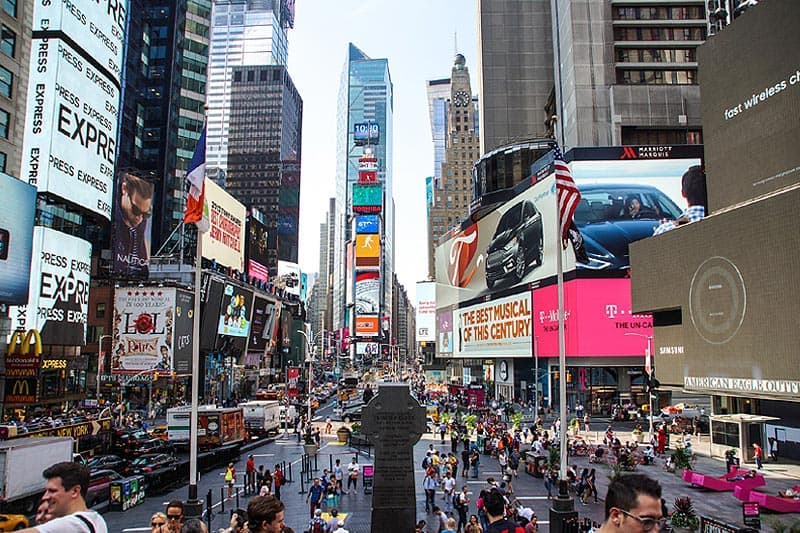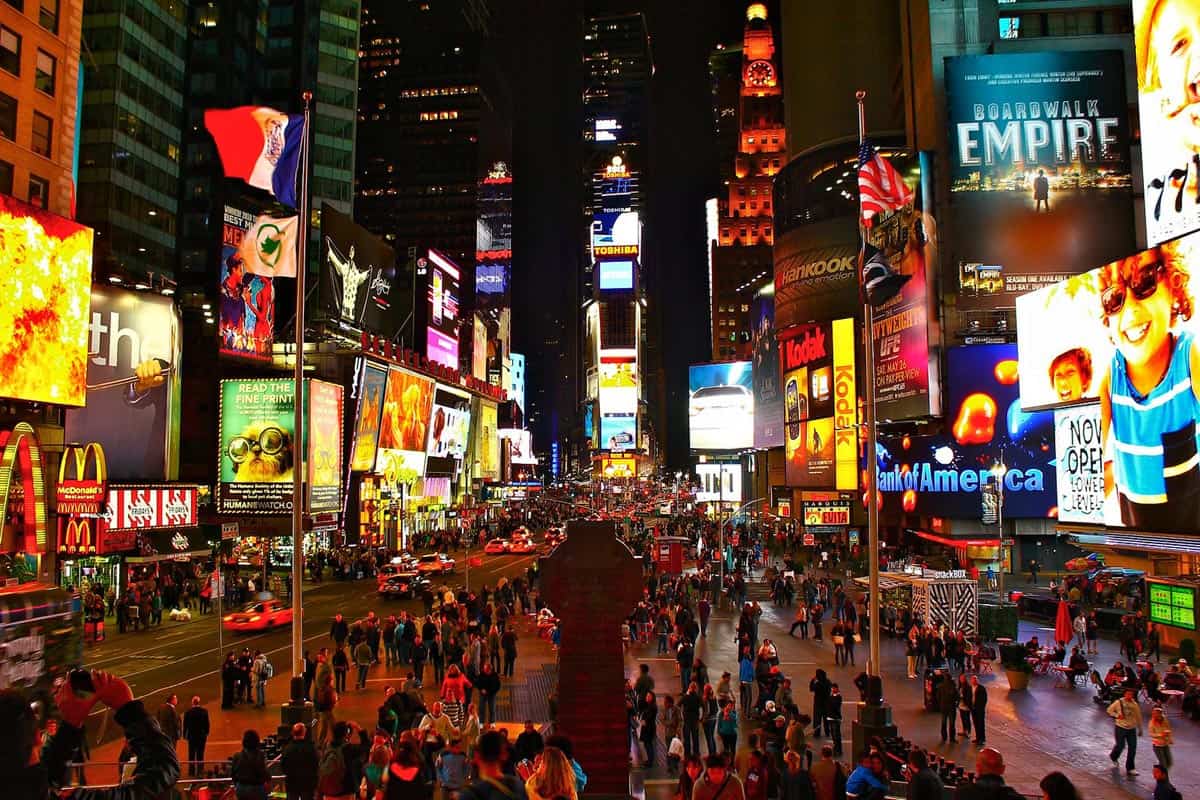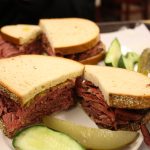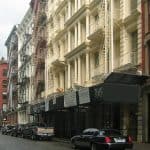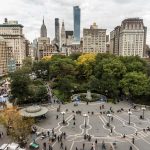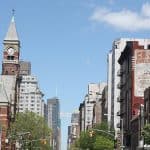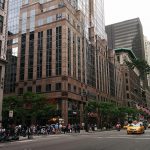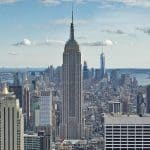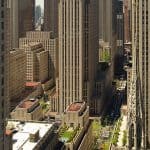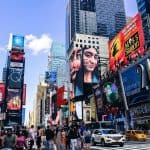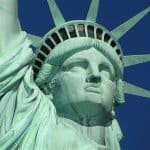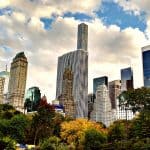Times Square, un lieu énergisant de New York
La petite histoire de Times Square
Située en plein coeur de Manhattan, Times Square s’appelait à l’origine Longacre Square. Ce n’est qu’en 1904 qu’elle sera rebaptisée : le siège du New York Times s’y installe et, quelques mois plus tard, la station de métro – et la place – sont rebaptisées Times Square.
Dans les années 1910 et 1920, le lieu est associé à l’art et à la culture : musique, théâtre, tous les artistes y vont. Dans les années 1930, en revanche, il devient un endroit malfamé, voire dangereux : beaucoup de criminalité, prostitution, délinquance… ce n’est pas du tout un endroit à la mode : c’est vraiment le lieu à éviter.
Times Square ne redeviendra en vogue que dans les années 1990, lorsque le maire Rudolph Giuliani a décidé d’appliquer la politique de tolérance zéro. Depuis, le quartier a été rénové et a retrouvé de sa superbe : c’est une place incontournable de New York. Les échoppes glauques ont fermé pour laisser la place à des boutiques immenses et illuminées.
Times Square est le lieu de rassemblement le plus important de New York : on y célèbre les grands événements sportifs, les élections présidentielles, le Nouvel An… Le 14 août 1945, deux millions de personnes vinrent y faire la fête après la capitulation du Japon. Depuis, la foule la plus nombreuse se réunit pour le jour de l’An, où l’on compte à rebours jusqu’à minuit : un moment magique, assurément.
Une place incontournable
Pour beaucoup de New-Yorkais, Times Square est le symbole de la ville : les néons, la foule, le bruit, les taxis, la ferveur citadine… même si l’on est adepte des endroits plus tranquilles, Times Square est à voir absolument. Ne pas le faire, ce serait un peu comme visiter Paris sans faire un tour sur les Champs-Élysées !
La place est très différente suivant le moment de la journée. Tôt le matin, elle est quasi déserte, mais les néons brillent encore, et elle offre un panorama vraiment très étonnant, presque poétique. L’après midi, elle est prise d’assaut par les fous de shopping : si vous voulez faire les boutiques à New York, c’est bien sûr là qu’il faudra aller. Les plus grandes enseignes s’étirent sur des étages entiers et se cachent derrière d’immenses panneaux publicitaires lumineux: gigantesque !
Mais c’est le soir que Times Square est sans doute la plus impressionnante : les néons scintillent, les taxis jaunes klaxonnent, les New-Yorkais gambadent d’un bout à l’autre de la place sans jamais vous percuter : c’est toute une chorégraphie ! Les boutiques sont ouvertes jusque tard dans la soirée, et de nombreux restaurants sont éparpillés tout autour de la place : vous n’oublierez jamais votre soirée à Times Square!
Pourquoi Times Square est devenue aussi célèbre ?
L’ampleur de la notoriété de Times Square, ce carré du temps, ne doit rien au hasard. Incontestablement, la position stratégique de ce lieu au cœur de Manhattan a grandement contribué à sa renommée et est à visiter absolument lors d’un long week-end à New York en 5 jours.
Cette fameuse intersection relie en effet Broadway à la 7ème avenue, deux artères essentielles de la métropole New-Yorkaise. Autrefois nommé Longacre Square, Times Square tire son nom actuel du célèbre journal The New York Times qui y avait élu domicile au début du XXe siècle.
Bien plus qu’un carrefour, ce lieu est le théâtre d’une multitude d’évènements grandioses. Qui n’a jamais rêvé de célébrer la nouvelle année en suivant la traditionnelle Descente de la boule de Times Square ? Cet évènement mondial a propulsé Times Square sur le devant de la scène internationale et contribue encore aujourd’hui à entretenir sa popularité.
Times Square est aussi la vitrine rutilante et incontournable de la démesure américaine. Ses buildings vertigineux ornés d’immenses panneaux publicitaires offrent un spectacle permanent à ses visiteurs. Fascinante et étourdissante, la débauche d’énergie et de lumière qui s’en dégage confère à ce lieu une atmosphère unique d’une vibrance presque palpable.
Enfin, n’oublions pas que Times Square est surtout le district du divertissement avec ses nombreux théâtres, dont le célébrissime Broadway. La magie du spectacle vivant est indissociable de l’essence même de Times Square, contribuant à son rayonnement artistique et culturel.
